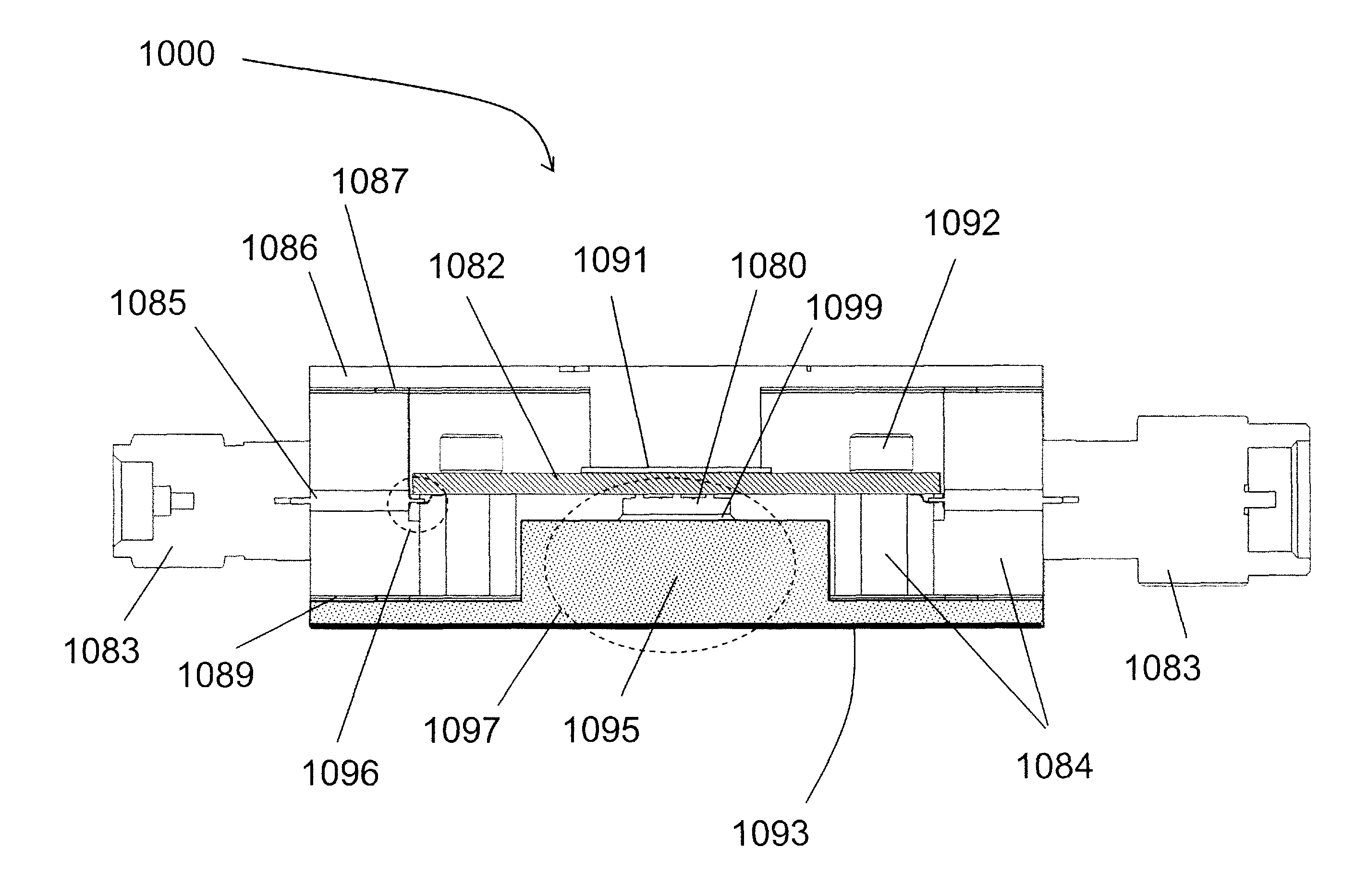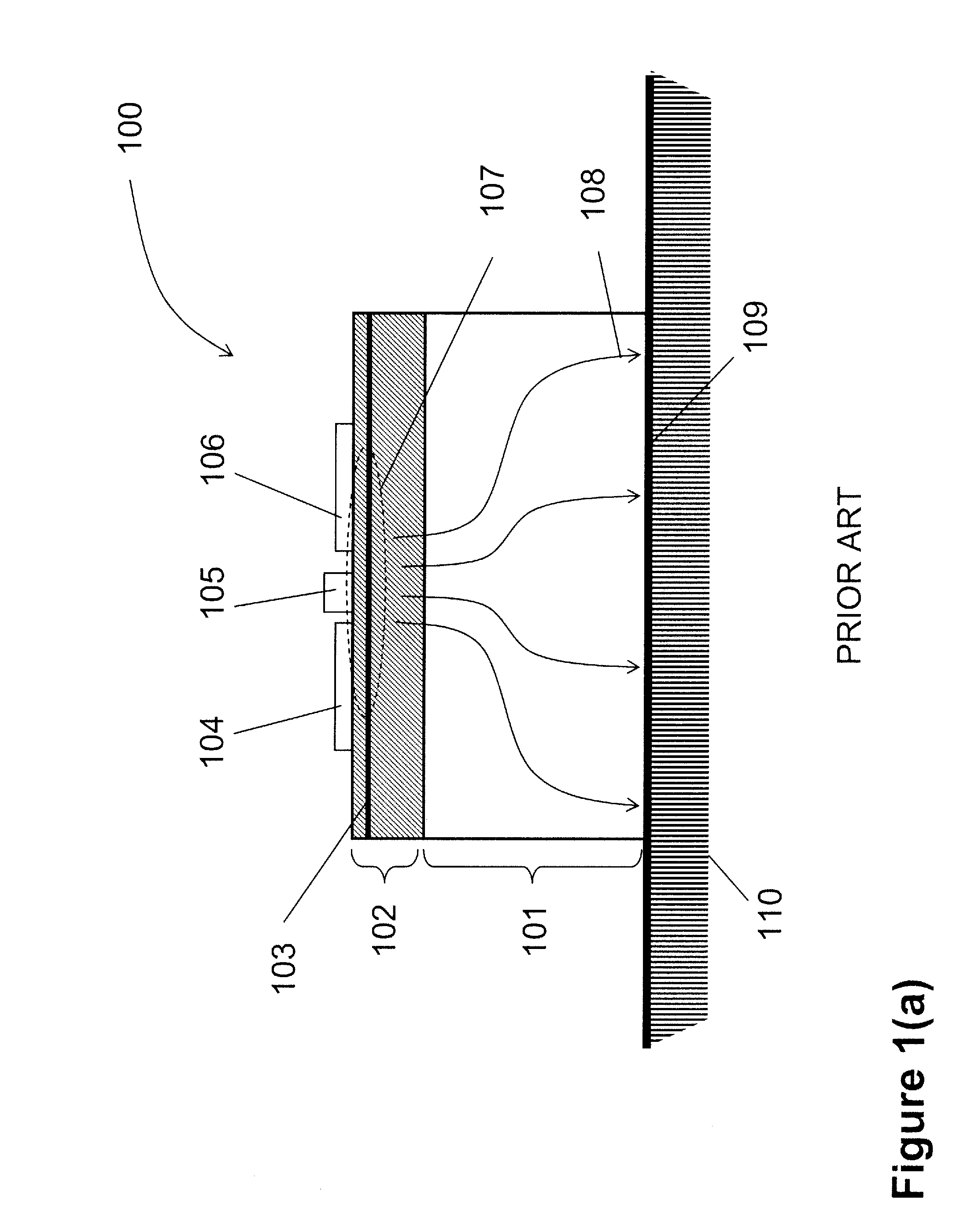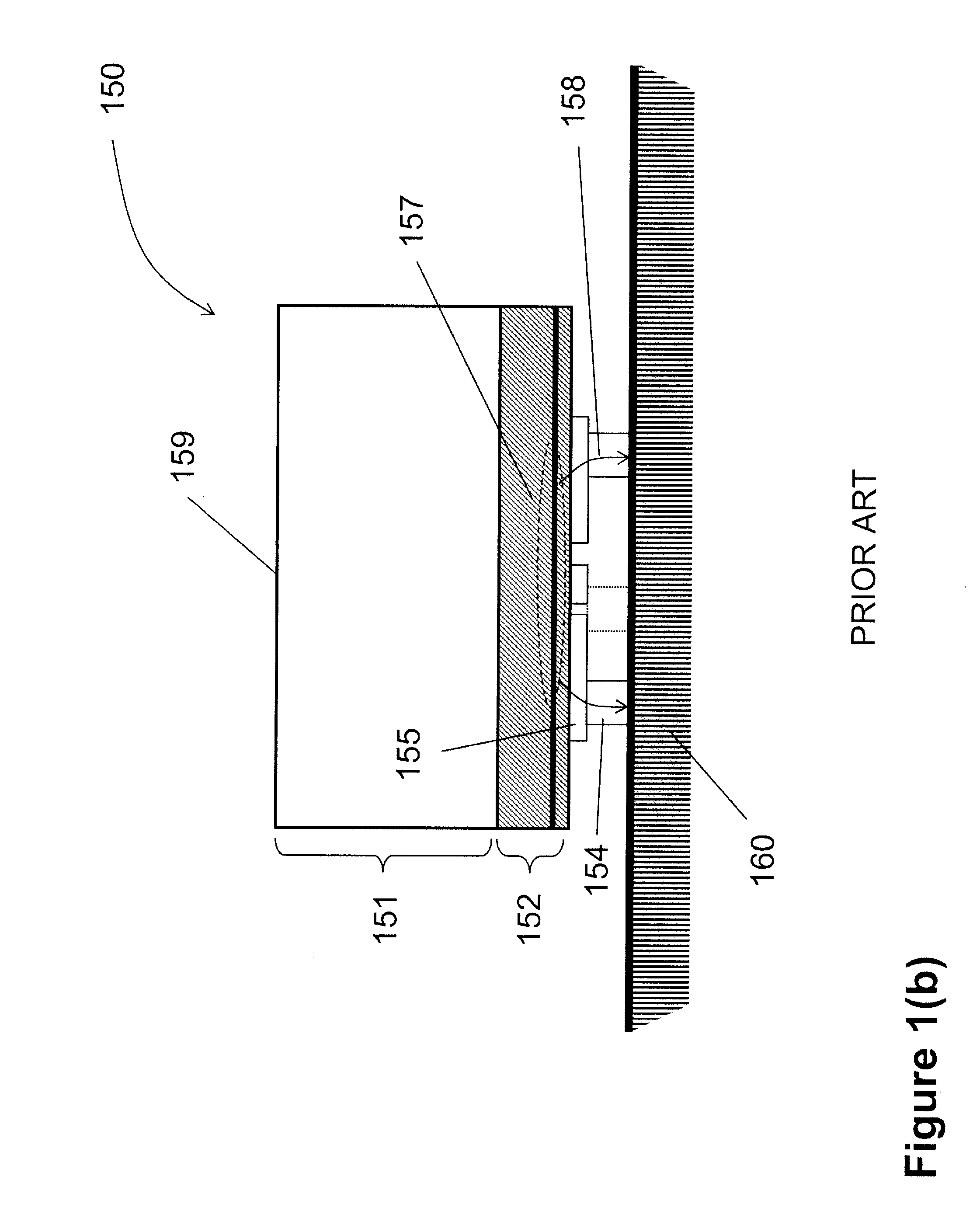RF and milimeter-wave high-power semiconductor device
a technology of semiconductor devices and milimeter-waves, applied in semiconductor devices, semiconductor/solid-state device details, electrical apparatus, etc., can solve the problems of heat extraction, heat extraction and microwave performance and device cost are generally difficult to satisfy, flip-chip technology has one main disadvantage, etc., to achieve simple processing of chips and secondary substrates and reduce costs
- Summary
- Abstract
- Description
- Claims
- Application Information
AI Technical Summary
Benefits of technology
Problems solved by technology
Method used
Image
Examples
Embodiment Construction
[0073]A discrete field-effect transistor has three terminals: source, gate, and drain terminals. To produce higher power, field-effect transistor are built in parallel so they utilize multiple gates and share multiple drains and sources. The maximum handling power of a field-effect transistor is determined by the maximum current carrying capacity (IDSS) of the channel with the 2D electron gas and the breakdown voltage (VBDS). As the current-carrying capacity (and hence power handling) capacity limited by material and epilayer structure properties, the power handling capacity is largely controlled by increasing the gate periphery (and the width or periphery the associated source and drain periphery that is adjacent to the gate). Due to the resistance of the metallization used to make the gate and resulting phase delay along the gate finger, the gate finger length cannot be increased indefinitely without producing a severe impact on the maximum operating frequency of the transistor. F...
PUM
 Login to View More
Login to View More Abstract
Description
Claims
Application Information
 Login to View More
Login to View More - R&D
- Intellectual Property
- Life Sciences
- Materials
- Tech Scout
- Unparalleled Data Quality
- Higher Quality Content
- 60% Fewer Hallucinations
Browse by: Latest US Patents, China's latest patents, Technical Efficacy Thesaurus, Application Domain, Technology Topic, Popular Technical Reports.
© 2025 PatSnap. All rights reserved.Legal|Privacy policy|Modern Slavery Act Transparency Statement|Sitemap|About US| Contact US: help@patsnap.com



